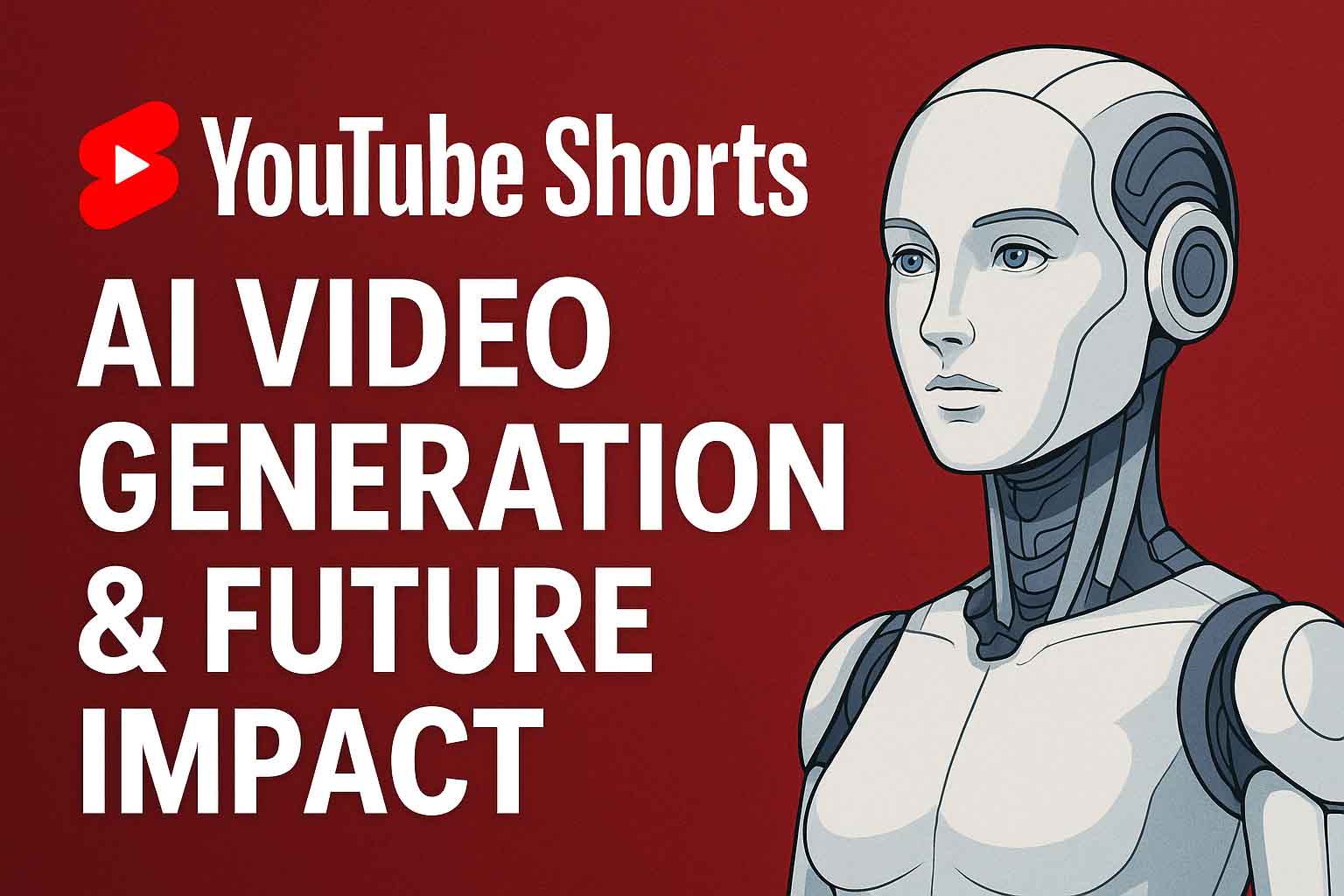What Happens When AI Meets YouTube Shorts?
Imagine being able to type a simple prompt into YouTube and instantly get a short video that went viral overnight. This futuristic scenario is inching closer to reality as YouTube CEO Neil Mohan reveals Google’s V3 model will soon power Shorts, allowing creators—and potentially anyone—to generate short-form videos directly on the platform. Watch the announcement here.
While this sounds like a game-changer, it also opens a Pandora’s box of questions about the quality, authenticity, and impact of AI-generated content.
Why Should We Care About AI-Generated Shorts?
YouTube Shorts has already disrupted how content is consumed, shifting focus to rapid, dopamine-triggering clips. The integration of Google’s V3 AI model will turbocharge Shorts by making video creation faster and more accessible than ever. But as content becomes easier to produce, will viewers lose their connection to creators? Will content quality plummet?
Neil Mohan’s insight, shared in the video, paints a cautious picture. The worry isn’t just about flooded feeds with “junk shorts” but also how future AI might seamlessly generate not only short but long-form videos, blurring the lines between human-made and algorithmic creations. The risk? Audiences chasing a dopamine hit regardless of authenticity.
How Can Creators Navigate This AI Revolution?
Balancing Creativity and Technology
Instead of fearing AI, creators can embrace it as a supportive tool—an aid for brainstorming, editing, or enhancing storytelling. Those who master this balance will likely stand out in a saturated landscape.
Guardrails for Quality and Ethics
Platforms like YouTube must tread carefully, implementing policies and technologies that discourage spammy or misleading AI videos. Transparency about AI involvement can foster trust without stifling innovation.
The Human Element Remains Irreplaceable
No matter how sophisticated AI becomes, genuine human connection, empathy, and creative nuance are challenging to replicate. Creators who focus on these will maintain loyal audiences.
What Does This Mean for Viewers?
Consumers should stay aware and discerning. AI-generated videos might flood feeds, but users have the power to choose what to watch and support. As AI content ramps up, media literacy and critical viewing become paramount.
Looking Ahead: The AI Content Frontier
Integrating Google’s V3 AI into Shorts is an exciting leap with vast potential. Yet the mixed feelings shared by industry insiders remind us to keep ethics, quality, and audience experience front and center.
For more thoughtful discussions on AI and its evolving role, especially around ethics, don’t miss See more AI news and ethics topics.
—
Ready to Dive Deeper?
Explore these developments, experiment with new AI tools, and reflect on how technology shapes creativity. The future of content isn’t just AI-powered, it’s human-driven with smarter tools.
—
FAQ
Q1: What does Google V3 mean for YouTube Shorts?
Google’s V3 integration into YouTube Shorts enables users to directly generate short-form videos using AI, making video creation faster and more accessible.
Q2: Will AI replace human video creators?
AI can assist in content creation but cannot fully replace the human elements of creativity, emotion, and storytelling that resonate with audiences.
Q3: How can viewers tell if a video is AI-generated?
Currently, discerning AI-generated videos can be challenging, but viewers should watch with critical awareness and look for transparency from creators and platforms.
📢 Want more insights like this? Explore more trending topics.

